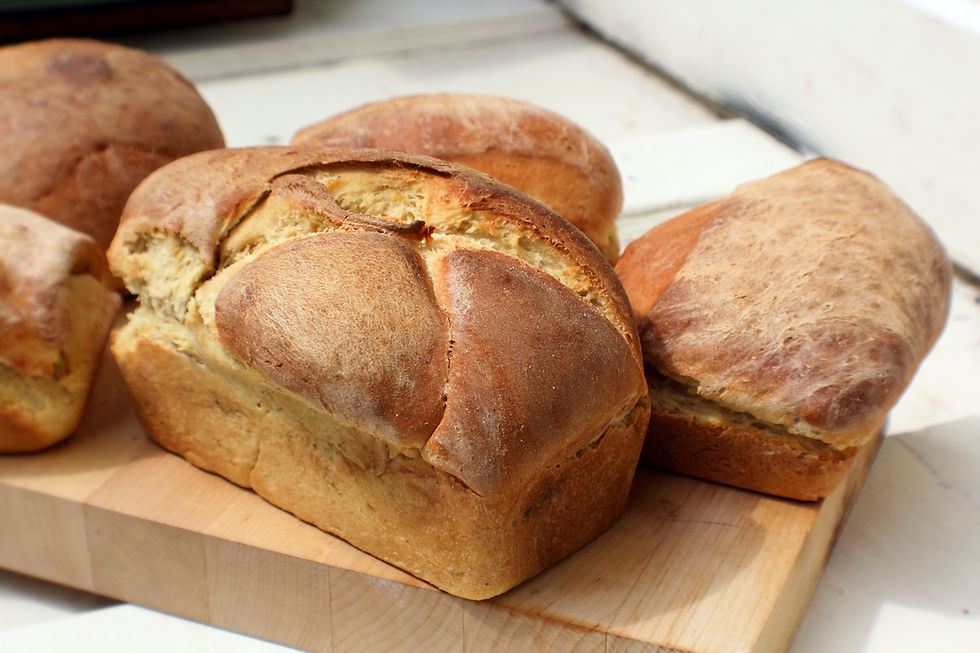In the early 1960s, the Bread was redesigned. The flour and yeast were changed and a combination of intense energy and chemical additives completely displaced time in the maturing of dough. Day by day more chemicals and additives found entry into the bakery, The bread has been made this way for sixty years. It is white and light but causing health problems
What's in our bread today,
Fat
Hard fats improve loaf volume, crumb softness and help it to last longer. These contain or produce trans fats, which can cause heart disease.
Flour Treatment Agent
L-ascorbic acid (E300) can be added to flour by the miller, or at the baking stage. It acts as an oxidant, helping to retain gas in the dough, which makes the loaf rise more and gives a false impression of value.
Bleach
Chlorine dioxide gas is used by millers and makes white flour whiter.
Reducing Agent
Used as L-cysteine hydrochloride (E920), cysteine is a naturally occurring amino acid used in baking to create stretchier doughs,
Soya Flour
Widely used in bread "improvers", soya flour has a bleaching effect on flour, and assists the machinability of dough and the volume and softness of bread, enabling more water to be added to the dough.
Emulsifiers
Widely used in bread improvers to control the size of gas bubbles, emulsifiers enable the dough to hold more gas and therefore grow bigger and make the crumb softer. Emulsifiers also reduce the rate at which the bread goes stale.
Preservatives
Calcium propionate is widely used, as is vinegar (acetic acid). Preservatives are only necessary for prolonged shelf life
Infestation of the chemical agents have earned the tag of junk to the bakery, which traditionally was healthy meal till 1960s.

Comments